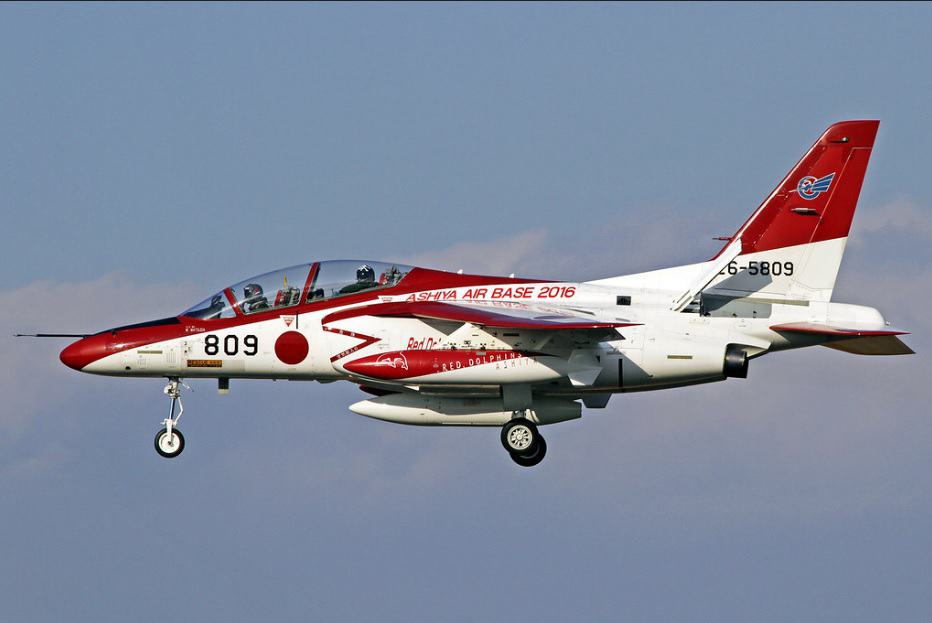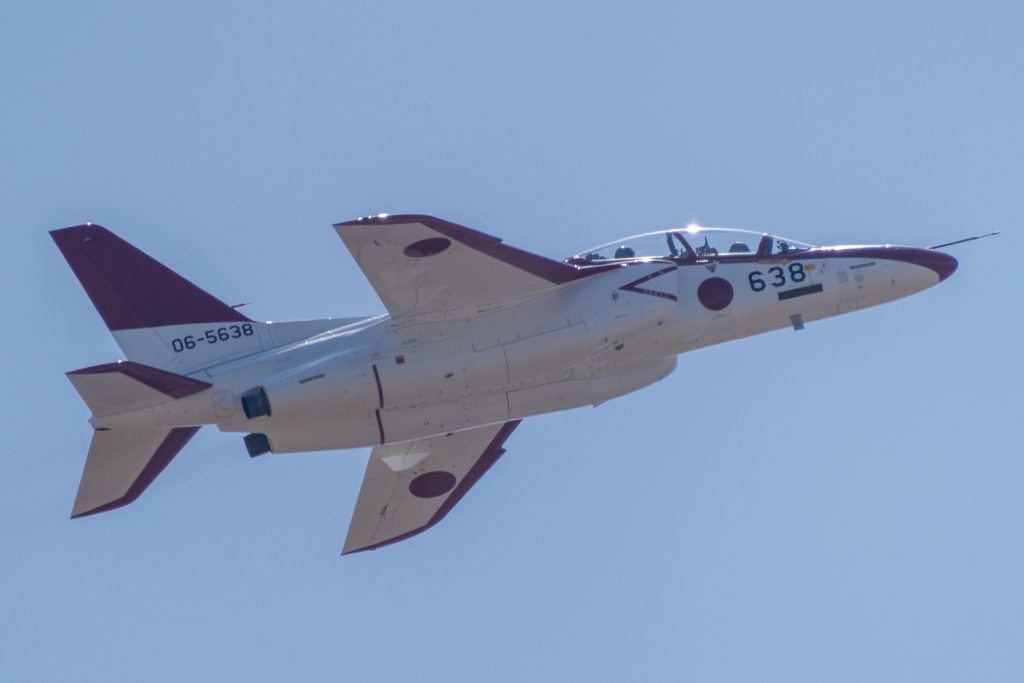The Kawasaki T-4 is a training aircraft – subsonic combat, built to train pilots for the Japan Air Self-Defense Force.

In addition to its primary training mission, the T-4 has been used by the JASDF’s Blue Impulse aerobatic team as well as liaison duties with most fighter units.
The T-4 is essentially a modern successor to the aging Lockheed T-33 line of intermediate jet trainers. The Kawasaki T-4 made its first test flight on June 29, 1985, and was officially released to the public in 1988. Currently, over 208 T-4s have been produced for the Japan Air Self-Defense Force.

The T-4 was designed as a bridge product for airmen cadets transitioning from basic turboprop trainers to full-fledged jet-powered combat warplanes. As such, the T-4 sports jet powerplants and exhibits high-performance capabilities. Composites are used in its construction to keep weight levels down yet retain a robustness the aircraft needs in performing combat-like maneuvers.

The design produced by Kawasaki had to satisfy aspects of the JASDF’s training regime that was previously performed by multiple aircraft. As such, the type had to demonstrate a range of transonic aerodynamic effects, as well as achieving a high level of manoeuvrability, a relatively-low operating cost, and high reliability levels. Furthermore, the economics for operating the type was to be comparable to the leading international competitors at that time.
The two-seat trainer, student and instructor, in tandem under a single-piece, lightly framed canopy set ahead of midships. There is an elongated nosecone assembly ahead of the crew and the fuselage tapers to the rear in the typical way. A single vertical tailfin in featured and a pair of horizontal planes complete the empennage. A retractable tricycle undercarriage allows for ground running. The wing mainplanes are mid-mounted along the sides of the fuselage and have underwing hardpoints while being plumbed for fuel delivery. The mainplanes are also swept back for aerodynamic efficiency at high speed.
The Kawasaki T-4 has a length of 13 m, a wingspan of 9.94 m, a height of 4.60 m, an empty weight of 3.7 tons, and a maximum take-off weight of 7.5 tons. It is powered by two Ishikawajima-Harima F3-IHI-30 turbofans, with 16.32 kN thrust each. The T-4 can reach a maximum speed of 1,038 km/h at sea level, a range of 1,668 km, a service ceiling of 15,240 m, and a Rate of climb of 51 m/s. While no combat-orientated model of the aircraft has been developed to date, the T-4 features 5 hardpoints, 4 underwing and 1 under fuselage, for drop tanks, practice bombs and target towing equipment.
The T-4 was comparable with several widely exported jet trainers, such as the Franco-German Dornier Alpha Jet and British BAE Systems Hawk. Specifically, the T-4 possessed a lower wing loading and 20 per cent greater thrust-to-weight ratio than either of these aircraft, easily permitting an initial climb to altitude rate of 3,000 m per minute.
The T-4 became a competitive product in the global trainer market that was considered reasonable if it was priced appropriately, but such export opportunities were denied by a long-standing Japanese policy that forbids any military export sales. As such, there was no realistic prospect of the type being sold to overseas customers and it was developed for the onset with the understanding that the T-4 would be used only by the JASDF.





